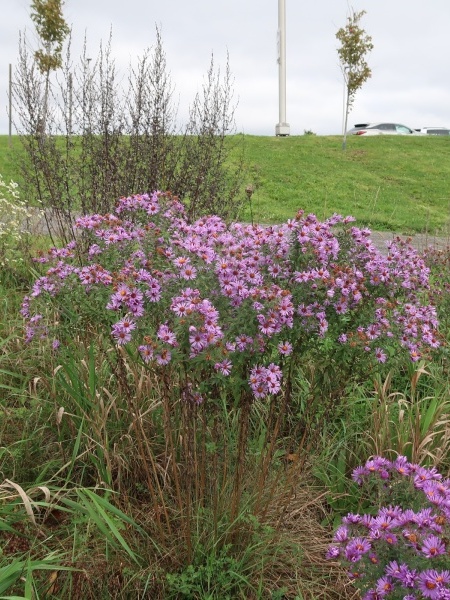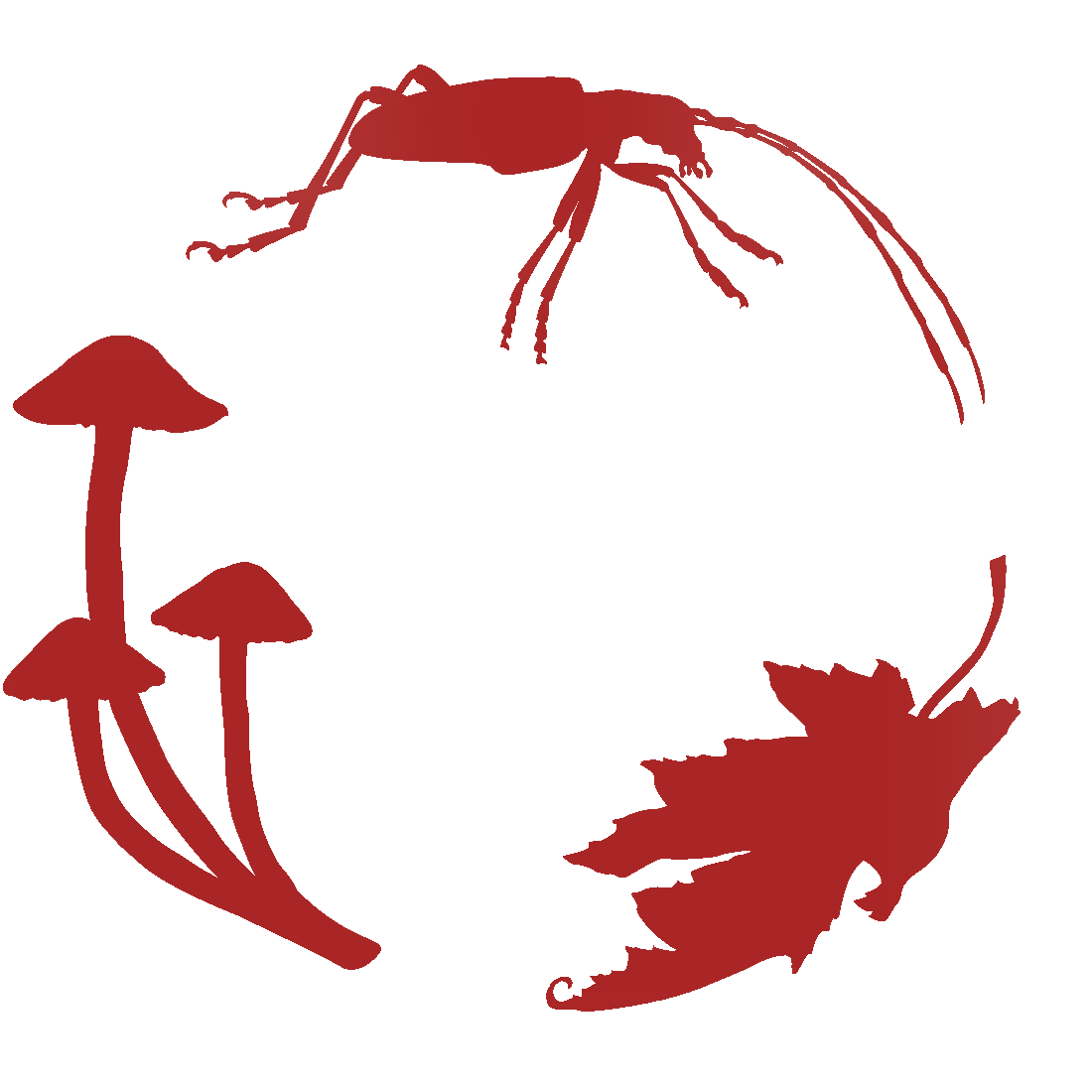
Source: OWSL
Symphyotrichum novae-angliae
New England Aster
Aster de Nouvelle-Angleterre
Synonyms
Michaelmas daisy
aster de la Nouvelle-Angleterre
Seeds in stock
Available at table Mixed Sun, Medium
Available at table Mixed Sun, Medium
We currently accept seeds for this plant
Bloom Colour: Purple
Bloom Period: Aug - Sep
Max Height: 5.0 feet
Max Width: 3.0 feet (spreads by rhizome)
Light Condition:
 More than 6 hours of direct sun a day
More than 6 hours of direct sun a day
 More than 2 or 3 hours but less than 6 hours of direct sun a day
Soil conditions:
More than 2 or 3 hours but less than 6 hours of direct sun a day
Soil conditions:
 Tolerates medium soil condition
Tolerates medium soil condition
 More than 6 hours of direct sun a day
More than 6 hours of direct sun a day
 More than 2 or 3 hours but less than 6 hours of direct sun a day
More than 2 or 3 hours but less than 6 hours of direct sun a day
 Tolerates medium soil condition
Tolerates medium soil condition
Lifespan:
Perennial
plants that will that come back year after year
Gardener Experience:
 Suitable for beginner gardeners
Suitable for beginner gardeners
 Does not spread uncontrollably
Does not spread uncontrollably
 Easy to germinate
Easy to germinate
 Self-seeding
Self-seeding
 Suitable for beginner gardeners
Suitable for beginner gardeners
 Does not spread uncontrollably
Does not spread uncontrollably
 Easy to germinate
Easy to germinate
 Self-seeding
Self-seeding
Landscape Uses:
 Suitable for rock gardens
Suitable for rock gardens
 Suitable for rain gardens
Suitable for rain gardens
 Suitable for shoreline rehabilitation
Suitable for shoreline rehabilitation
 Suitable for container garden
Suitable for container garden
 Suitable for school gardens
Suitable for school gardens
 Tolerates boulevard garden conditions
Tolerates boulevard garden conditions
 Suitable for rock gardens
Suitable for rock gardens
 Suitable for rain gardens
Suitable for rain gardens
 Suitable for shoreline rehabilitation
Suitable for shoreline rehabilitation
 Suitable for container garden
Suitable for container garden
 Suitable for school gardens
Suitable for school gardens
 Tolerates boulevard garden conditions
Tolerates boulevard garden conditions
Ecological Benefits:
 Supports birds
Supports birds
 Supports pollinators
Supports pollinators
 Butterfly host
Butterfly host
 Keystone species
Keystone species
 Supports birds
Supports birds
 Supports pollinators
Supports pollinators
 Butterfly host
Butterfly host
 Keystone species
Keystone species
Tolerates:
 Tolerates salt conditions
Tolerates salt conditions
 Tolerates limestone conditions
Tolerates limestone conditions
 Tolerates acidic soil conditions
Tolerates acidic soil conditions
 Tolerates juglone conditions
Tolerates juglone conditions
 Tolerates transplantation
Tolerates transplantation
 Tolerates salt conditions
Tolerates salt conditions
 Tolerates limestone conditions
Tolerates limestone conditions
 Tolerates acidic soil conditions
Tolerates acidic soil conditions
 Tolerates juglone conditions
Tolerates juglone conditions
 Tolerates transplantation
Tolerates transplantation
Special Features and Considerations:
 This plant causes skin rashes
This plant causes skin rashes
 This plant causes skin rashes
This plant causes skin rashes
Plant Location
Native to Ottawa region: Yes
Distribution according to VASCAN

Ephemeral
Native
Introduced
Excluded
Extirpated
Doubtful
Absent
Thrives in Ecozones
- Atlantic Maritime
- Prairies
- Boreal Shield
- Mixed Wood Plains
Ecological Benefits
Butterflies Supported by Symphyotrichum novae-angliae
- Cucullia convexipennis (Brown Hooded Owlet)
- Eupithecia miserulata (American Common Pug)
- Euplexia benesimilis (American Angle Shades)
- Leuconycta diphteroides (Green Leuconycta)
- Phyciodes cocyta (Northern Crescent)
- Trichordestra legitima (Striped Garden Caterpillar)
Specialized Bees Supported by Symphyotrichum novae-angliae
- Andrena aliciae
- Andrena asteris
- Andrena canadensis
- Andrena chromotricha
- Andrena hirticincta
- Andrena nubecula
- Andrena placata
- Andrena simplex
- Complexe Colletes americanus
- Complexe Colletes compactus
- Complexe Colletes simulans
- Dianthidium simile
- Melissodes agilis
- Melissodes druriellus
- Melissodes illatus
- Melissodes subillatus
- Melissodes trinodis
- Protandrena andrenoides
- Pseudopanurgus aestivalis
Plants that grow in similar conditions, that bloom at the same time.
Complementary Plants
- Helianthus giganteus
Giant Sunflower
Hélianthe géant - Lobelia spicata
Pale-spike Lobelia
Lobélie à épi - Solidago rigida
Stiff Goldenrod
Verge d'or rigide - Sorghastrum nutans
Yellow False-sorghum
Faux-sorgho penché - Teucrium canadense
Canada Germander
Germandrée du Canada
Substitute For Non-Native Plants
- Chrysanthemum (Mums)
- Rosa (Non-native Roses)
- Helianthus (Non-Native Sunflower)
- NA (Black Eyed Susan's Cultivars)
- Rudbeckia Triloba (Brown Eyed Susan's)
- Echinacea (Coneflowers)
- NA (Coreopsis cultivars)
- NA (Non-native False Sunflower)
- Symphiotrichum (Non-Native Aster)
- Melilotus albus (Sweet White Clover)
- Hesperis matronalis (Dame Rocket)
Sowing Information
Download Seed Envelope Labels (PDF)
- Sowing depth: Surface sow
- Sow by February
- Stratification conditions: Cold moist stratify
- Stratification duration: 60 days
- Self-seeding
Harvesting and Seed Sharing
- Harvest start month: October
- Harvesting indicator:
- Seeds have become fluffy and can be easily removed by shaking on gently pulling off from stem
- Harvesting:
- Shake seed head in paper bag
- Seed viability test:
- No test needed before donating
- Packaging measure: 1 rounded 1/4 teaspoon
- Seed storage:
- Air dry in paper bag or open container, for a few days until crisp
- Shake seeds to move them once in a while to prevent molding
- Cultivar: Yes, do not donate unless you know source, and there are no known cultivars in your garden or at proximity
- No harvesting video available at this time.
Toxicity Notes
Not known to be toxic to mammals if ingested.


 Canadensis
Canadensis
